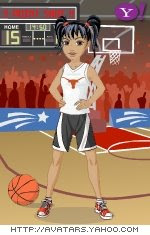Thing #22 Post:
My introduction to social networking began when my daughter, in college at the time, called and said, "Mom, I created you a Facebook account so you can keep up with all the pictures I post and stay up with who my friends are and what we are doing." She assumed I would be okay with this and as she knows me quite well, I was really grateful. So what started as a small family oriented bookmark on my computer, gradually ballooned as her friends (many my former students), their moms, my co-workers, etc. invited me to be a friend. Then about a year ago, BAM! I became connected to extended cousins who I had lost contact with, elementary school friends and the list is endless. Personally I have treasured facebook, mostly for the reconnect with my family and their children.
I think it is important that educators understand how social networking works. For example, it has become nearly a substitute for email. I received an inbox message recently from a former student looking for a science teaching job. No phone call. No school email. He looked me up on FB. I lost contact with the wedding videographer for my daughter's wedding. His email was bouncing back, his phone no longer worked. I looked at the routine people search engines on the web to no avail. Finally I thought, "Maybe he's on facebook?" Two seconds later- there he is, staring right at me. I sent him a note, he responded in an hour!
To be fair, I do have a MySpace account, but have not spent much time on it. It did not lead to rewarding interaction for me, other than keeping up with our children's events. I have joined Plaxo and Linkedin but have not done anything with that except I get a notice on my email every so often of another contact. If I find time I should see how they have updated.
As far as useful features, I enjoy joining groups on FB. I even noticed that all middle schools in Mesquite ISD had an alumni site, except A.C. New, so I established one! It now has about 100 members!
I don't really see a direct educational application yet. My friend, Stormy Shippy, has developed a
textbook finder program that is linked to facebook. He is an alumni of UNT and the program also gives students the ability to list their school schedule and link to other classmates. This might help with large universities especially where it may be hard to build study groups.








